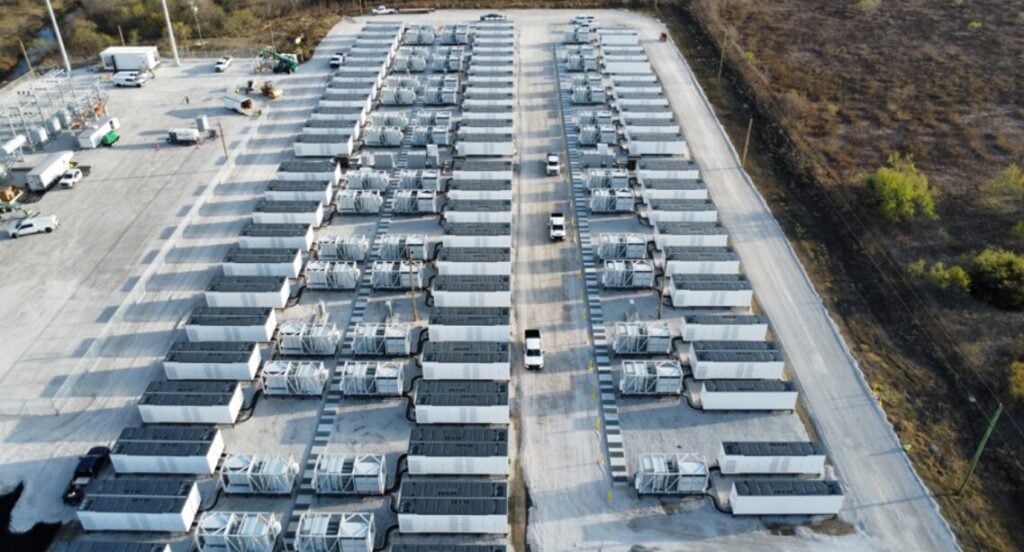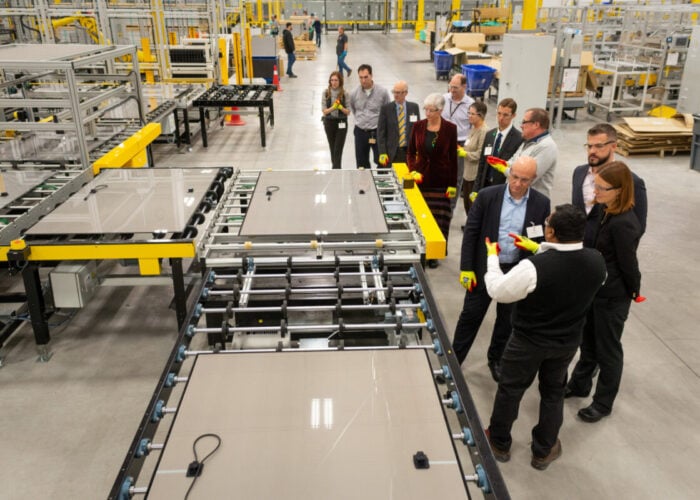
Energy storage escaped much of the pain inflicted on solar in the recent legislative changes, but foreign entity restrictions may create some supply-chain challenges. April Bonner reports.
The energy storage industry faced a great deal of uncertainty during the refining of the 2025 budget reconciliation bill. At various points, the ‘One Big Beautiful Bill’ (OBBB) included an elimination of investment tax credits (ITCs), a 60-day construction commencement requirement and other provisions that would have proved problematic for energy storage developers.
Try Premium for just $1
- Full premium access for the first month at only $1
- Converts to an annual rate after 30 days unless cancelled
- Cancel anytime during the trial period
Premium Benefits
- Expert industry analysis and interviews
- Digital access to PV Tech Power journal
- Exclusive event discounts
Or get the full Premium subscription right away
Or continue reading this article for free
In its final form, the OBBB Act largely maintains tax credits for battery and other energy storage technologies through the next decade. This decision underscores the Trump administration’s priorities on energy security, grid resilience, and domestic manufacturing. In contrast, the Biden administration’s Inflation Reduction Act (IRA) focused more on increasing a diverse range of renewable energy technologies.
Changes to investment tax credit incentives
US energy storage projects that begin construction by the end of 2033 will still be eligible for ITC incentives. These technologies can also qualify for technology-neutral tax credits at the full rate of 30% of capex, with additional domestic content bonuses increasing the total to around 45%.
The bill amends the regulations for technology-neutral tax credits outlined in sections 45Y and 48E of the US tax code. These credits are available for power projects with zero or negative lifecycle greenhouse gas emissions and battery and other energy storage projects, regardless of their emissions. They can cover between 30% and 70% of the project costs.
Projects claiming legacy tax credits under section 45 or 48 of the US tax code are unaffected by the bill. These credits can be claimed for projects that were under construction by the end of 2024. The 45Y tech neutral PTC and 48E tech-neutral ITC will be phased out by 25% beginning in 2034, until they are eliminated after 2035.
The Section 45X tax credits for manufacturers of batteries and energy storage components remain mostly intact. The Act outlines a phased reduction of these credits over three years beginning after 2029, offering a more extended support period for domestic producers of battery and storage equipment relative to other clean energy technologies.
FEOC restrictions
Arguably, the most significant developments in energy storage are the new Foreign Entity of Concern (FEOC) restrictions. Technology-neutral tax credits for new power plants and energy storage projects will be denied if they rely heavily on Chinese equipment. Similarly, section 45X tax credits for US-made products will be withheld if they incorporate too many Chinese components.
As explained in an analysis from law firm Norton Rose Fullbright, tax credits will also be denied to companies that depend on Chinese investments or that make payments to Chinese-related counterparts through contracts and technology licences, especially when these counterparties have “effective control” over the companies, their projects, or products.
FEOC regulations will take effect for tax years after 4 July, 2025. As noted earlier, these regulations do not apply to renewable energy and storage projects claiming legacy tax credits under section 45 or 48. Starting in 2026, 55% of a project’s costs must originate from non-prohibited foreign entities, rising to 75% in and after 2030.
These calculations become more complicated when adding that a prohibited foreign entity is described as an entity with ties to China, Russia, North Korea or Iran. As explained by Norton Rose Fullbright:
“The ties can be such things as 25% or more ownership by a single Chinese shareholder or 40% by two or more such shareholders or at least 15% of total debt held by Chinese lenders, only counting debt holders at original issuance.”
Additionally, payments to over 50% of Chinese-owned companies or agreements granting such firms control, including long-term licensing rights, can classify a supplier as a prohibited foreign entity. It could be argued that these definitions encourage developers to prioritise domestic content sources, since the regulations create risks for US-based developers in sourcing content produced abroad; regardless of intent, they are stringent.
The IRS has six years to challenge a tax return over material assistance. A 20% penalty applies if the taxpayer pays more than 1% less tax due to miscalculation. For corporations, penalties apply if the tax shortfall from miscalculation is at least US$10 million or more than 1%. Equipment suppliers who provide false certificates face penalties of 10% of the customer’s claimed tax reduction. The reduction must be at least 5% of the owed tax or, if less, US$100,000.
For now, if projects obtain their cells from a foreign source not designated as an FEOC, the developer will not qualify for the domestic content bonus but will still receive the ITC. While the changes bring new issues to developers in the US, many market leaders agree that having more clarity on future projects is a welcome change from recent months.
Read more about how the US solar industry responded to the passage of the OBBB here, and whether there are any silver linings to come from the latest shifts in US policy here.






